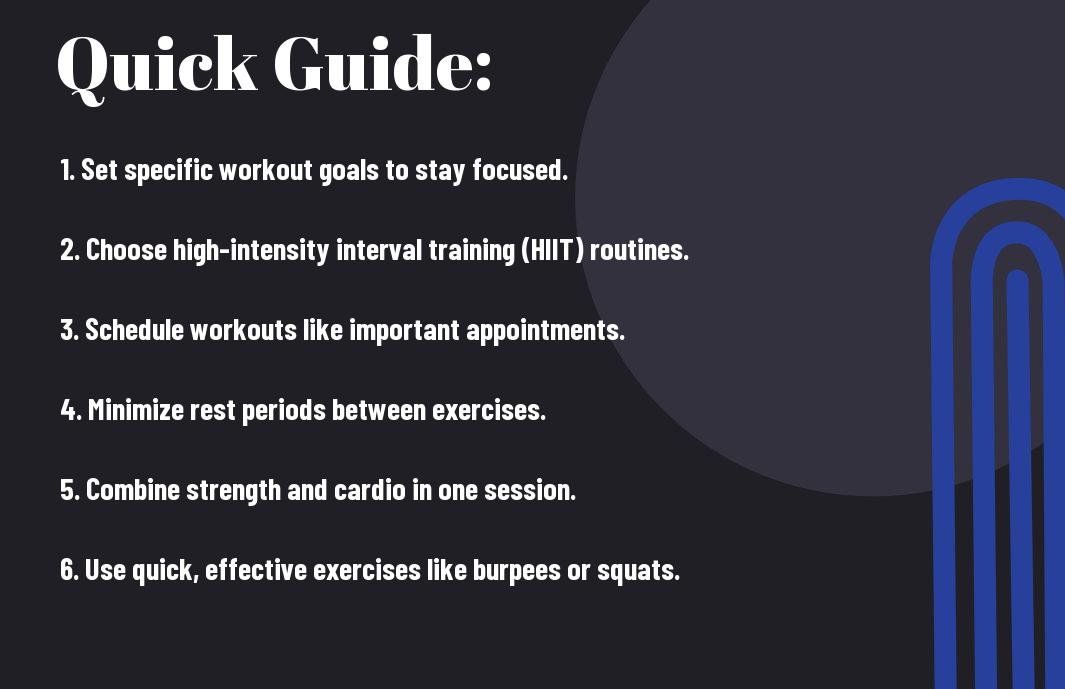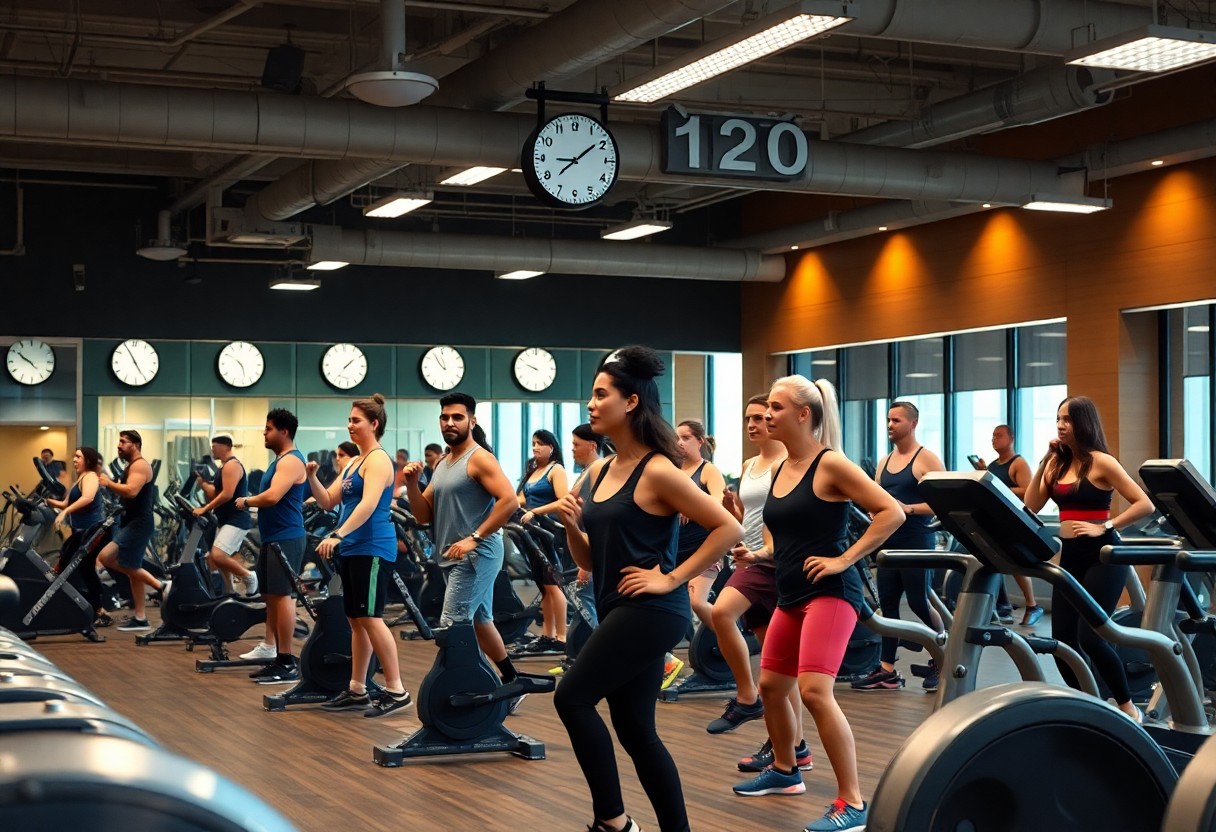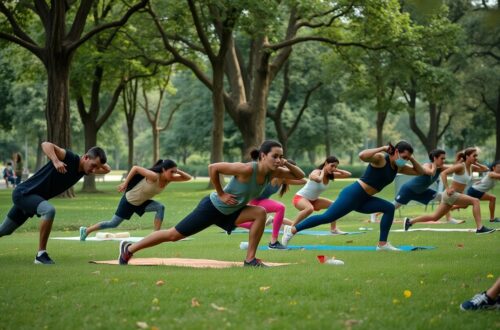Overwhelmed by your busy schedule but still want to achieve your fitness goals? This Time-Efficient Workout Tips Guide is designed specifically for you. You’ll discover effective strategies to maximize your exercise routine without sacrificing precious time. From high-intensity interval training to smart scheduling techniques, these tips will help you make the most of every minute spent working out. Get ready to elevate your fitness game while seamlessly fitting workouts into your lifestyle!
Key Takeaways:
- High-Intensity Interval Training: Incorporate short bursts of intense activity followed by rest to maximize calorie burn in a limited timeframe.
- Workout Scheduling: Consistently schedule your workouts at the same time each day to establish a routine and make it easier to stick with.
- Combine Strength and Cardio: Merge strength training with cardiovascular exercises to save time while improving overall fitness and endurance.
- Use Compound Movements: Focus on exercises that work multiple muscle groups simultaneously to optimize your workout efficiency.
- Stay Flexible: Shorten or modify your workouts when time is limited, ensuring you still maintain some level of activity.
- Prepare in Advance: Plan your workouts and set out your gear beforehand to minimize downtime and distractions.
- Track Progress: Keep a record of your workouts to stay motivated and make necessary adjustments for continuous improvement.

Types of Time-Efficient Workouts
Before you explore your fitness journey, it’s vital to explore various types of time-efficient workouts to determine which fits your lifestyle best. Here are a few effective options:
- High-Intensity Interval Training (HIIT)
- Circuit Training
- Bodyweight Exercises
- Tabata Workouts
- Short but Intense Yoga Sessions
The right approach will help you maximize results in minimal time.
| Workout Type | Description |
| HIIT | Short bursts of intense exercise followed by rest. |
| Circuit Training | Combines strength and cardio in a fast-paced format. |
| Bodyweight Exercises | Use your own body weight for resistance. |
| Tabata | High-intensity 20 seconds of work followed by 10 seconds of rest. |
| Yoga | Focuses on flexibility and strength with shorter sessions. |
High-Intensity Interval Training (HIIT)
Interval training is a highly effective workout method that alternates between intense bursts of activity and short recovery periods. You can complete a HIIT session in 20-30 minutes, making it an ideal choice for busy schedules. This style enhances cardiovascular fitness, burns calories efficiently, and can be tailored to various fitness levels. Incorporating HIIT into your routine will force your body to adapt and improve, ensuring you stay challenged.
Circuit Training
Now you can incorporate circuit training to optimize your workout time. This format consists of performing a series of exercises back-to-back with minimal rest. Each exercise targets different muscle groups, providing a full-body workout that keeps your heart rate elevated and builds strength simultaneously. You can mix cardio, strength, and core exercises to enhance overall fitness while saving time.
Understanding circuit training allows you to customize your sessions based on fitness goals and available equipment. You can design your circuit with exercises such as push-ups, squats, lunges, and jumping jacks. Striking a balance between intensity and variety is vital, ensuring you work on different aspects of fitness without overtraining. These workouts can typically be completed in 20-30 minutes, making them an excellent solution for short, effective training sessions.


Essential Tips for Maximizing Your Workout Time
While getting the most out of your workout time is necessary, there are effective strategies that can help you make every minute count. Consider the following tips to enhance your efficiency:
- Plan your workouts in advance.
- Stay focused and avoid distractions.
- Use a timer to keep track of your sets.
- Incorporate high-intensity intervals.
The key is to streamline your routine and stay committed to your fitness goals.
Prioritize Compound Exercises
The best way to maximize your workout is to focus on compound exercises, which engage multiple muscle groups simultaneously. By opting for movements like squats, deadlifts, and bench presses, you not only burn more calories but also build strength and efficiency. This approach allows you to achieve greater results in less time while enhancing your overall fitness performance.
Limit Rest Periods
For optimal time efficiency, limiting your rest periods can significantly elevate the intensity of your workouts. By reducing downtime between sets, you keep your heart rate up and maintain focus. This method not only works for strength training but also complements cardio routines. You can experiment with shorter intervals to find a balance that challenges you without compromising your performance.
Essentially, keeping your rest periods brief pushes your body to adapt quicker and enhances cardiovascular benefits, leading to improved endurance. Aim for 30 to 60 seconds of rest depending on your fitness level and the intensity of the workout. This approach will streamline your sessions, making every minute count and potentially boosting your results.
Step-by-Step Guide to Designing Your Workout
Not every workout plan is created equal. To build an effective routine that fits your lifestyle, you should start by following a structured approach. Begin by outlining your goals and preferences, then consider the time you can dedicate to working out. Reference this Guidelines For Time-Efficient Resistance Training Workouts to help you design a plan that suits you.
Assessing Your Fitness Level
| Step | Action |
| 1 | Evaluate your current fitness metrics and performance. |
| 2 | Identify strengths and weaknesses to tailor your program. |
| 3 | Set realistic benchmarks for progress. |
Assessing Your Fitness Level
Assuming you want to maximize your workouts, it’s important to evaluate your current fitness level first. By assessing your strengths and weaknesses, you can better tailor your program to fit your unique needs. This not only optimizes your performance but also helps set realistic goals to track your progress over time.
Structuring Your Weekly Plan
Designing a weekly workout plan involves strategically organizing your training sessions to incorporate various workout types, intensity levels, and recovery days. Your plan should allow for balanced training that hits all major muscle groups while providing adequate rest periods for recovery and growth.
Plus, consider incorporating variety into your routine to keep things engaging and effective. Aim for a mix of strength training, cardio, and flexibility exercises spread throughout the week. This way, you ensure that you address different aspects of fitness while making the most of your limited workout time.
Key Factors Affecting Workout Efficiency
Your workout efficiency can be impacted by various factors that play a significant role in your overall performance. To optimize your routines, pay attention to these key elements:
- Workout Structure
- Time Management
- Nutrition
- Hydration
- Sleep
- Recovery
Perceiving these factors will help you fine-tune your approach and maximize results.
Nutrition and Hydration
You must focus on proper nutrition and hydration to fuel your workouts effectively. Eating balanced meals that consist of protein, healthy fats, and carbohydrates will provide you with the energy needed to perform well. Staying hydrated is equally important, as it directly impacts your performance and recovery. Ensure you’re drinking enough water before, during, and after workouts to keep your body functioning optimally.
Sleep and Recovery
Nutrition plays a vital role in enhancing your sleep and recovery, allowing your body to rebuild and recharge effectively. Ensuring that you get quality sleep helps in hormone regulation and muscle recovery, which can significantly affect your performance. Aim for 7-9 hours of restful sleep per night to facilitate recovery and enhance workout efficiency.
The importance of sleep and recovery cannot be understated. Quality sleep aids in muscle repair, reduces fatigue, and enhances mental clarity, allowing you to perform your best during workouts. Additionally, incorporating rest days into your schedule is necessary to prevent overtraining and ensure your body has adequate time to recover from intense sessions, ultimately leading to improved efficiency and results over time.
Pros and Cons of Time-Efficient Workouts
Despite the growing popularity of time-efficient workouts, it’s important to evaluate both their advantages and disadvantages. The following table outlines the key pros and cons to consider before committing to a shorter exercise routine:
| Pros | Cons |
|---|---|
| More time for other activities | Limited exercise variety |
| Improved focus and intensity | Potential for missed muscle groups |
| Convenient for busy schedules | Requires discipline and consistency |
| Can lead to faster results if done correctly | May not suit everyone’s fitness level |
| Encourages shorter recovery time | Risk of injury without proper form |
If you’re looking for more insights into effective workout strategies, check out The Best Workout Routine Ever, According to Science.
Benefits of Short Workouts
To maximize your busy schedule, short workouts offer you the ability to gain significant fitness benefits in a limited time. They can boost your metabolism, increase your cardiovascular health, and save you valuable hours throughout your week. Additionally, short workouts often maintain high intensity, which can lead to better performance and faster progress towards your fitness goals.
Potential Drawbacks
With any fitness regime, it’s important to note potential downsides. Short workouts may limit your ability to perform a comprehensive range of exercises, which can negatively impact overall strength development.
Drawbacks include the potential for training imbalances, as you may favor certain muscle groups over others during shorter sessions. This can hinder overall physical development and even lead to injuries if certain muscles remain underdeveloped. Additionally, the high intensity of these workouts may not be suitable for beginners or those with specific health concerns, further complicating their effectiveness for everyone.

Tools and Resources to Enhance Your Routine
Many fitness enthusiasts turn to quality tools and resources that can significantly boost their effectiveness in achieving a time-efficient workout. Exploring Tips for a Fast Workout | How to Strength Train Efficiently can provide you with insights on structuring your regimen effectively. Invest time in finding the right equipment, whether it’s resistance bands, kettlebells, or bodyweight exercises, to maximize your results with minimal time commitment.
Fitness Apps and Trackers
For those looking to streamline their fitness journey, fitness apps and trackers are invaluable tools. These applications not only help you track your workouts but also provide videos and guided exercises, ensuring you stay motivated and accountable. By setting goals and monitoring your progress, you can make the most of your limited time and keep your routine effective.
Online Workout Programs
Routine customization becomes effortless when you explore online workout programs tailored to your specific needs. These programs often offer flexibility, allowing you to fit your workouts into your busy schedule without sacrificing quality. With a variety of classes available, from high-intensity interval training to yoga, you can switch it up and keep your sessions engaging. Whether you seek community support or expert guidance, online platforms can cater to your lifestyle and workout preferences effectively.
With numerous options available, it’s important to research various online workout programs to find one that aligns with your fitness goals and availability. Many platforms offer free trials, so take advantage of these to gauge what suits you best. Engaging with structured programs online helps ensure consistency in your workouts, provides professional expertise, and keeps things fresh, making it easier to integrate exercise into your busy life.
Summing up
The Time-Efficient Workout Tips Guide equips you with strategies to maximize your fitness routine within limited time frames. By incorporating high-intensity interval training, prioritizing compound exercises, and scheduling shorter but more effective workouts, you can achieve your fitness goals without lengthy gym sessions. Staying consistent, focusing on your nutrition, and utilizing technology for tracking can further enhance your efficiency. With these tips, you can transform your approach to fitness, making your workouts more productive and enjoyable.
Time-Efficient Workout Tips Guide FAQ
Q: What is the main objective of the Time-Efficient Workout Tips Guide?
A: The main objective of the guide is to provide effective strategies and exercises that maximize workout effectiveness while minimizing time commitment. This helps individuals incorporate fitness into their busy schedules without sacrificing quality results.
Q: How can I tailor a workout to fit into a short time frame?
A: To tailor a workout for short durations, focus on high-intensity interval training (HIIT), perform compound exercises that engage multiple muscle groups, and limit rest periods between sets to maintain an elevated heart rate while promoting cardiovascular benefits.
Q: What types of exercises are recommended for time-efficient workouts?
A: Recommended exercises include bodyweight movements like squats, lunges, push-ups, and pull-ups, as well as kettlebell swings, burpees, and plank variations. These exercises maximize muscle engagement and calorie burn in a shorter time span.
Q: How often should I incorporate time-efficient workouts into my routine?
A: Aim to include time-efficient workouts at least three to five times a week. This frequency allows for adequate adaptation and recovery while fitting seamlessly into busy schedules.
Q: Can I replace traditional gym sessions entirely with time-efficient workouts?
A: Yes, time-efficient workouts can effectively replace traditional gym sessions, especially for those with time constraints. However, it’s important to listen to your body and ensure that you’re still receiving well-rounded fitness benefits by integrating various training modalities over time.
Q: What are some tips for staying motivated during short workouts?
A: Staying motivated can be achieved by setting clear, achievable goals, varying your workout routines to keep things fresh, tracking your progress, and incorporating fun elements such as workout challenges or group classes to maintain enthusiasm and accountability.
Q: Are there any dietary considerations to enhance the effectiveness of time-efficient workouts?
A: Yes, a balanced diet with sufficient protein, healthy fats, and carbohydrates helps fuel your workouts and supports recovery. Hydration is also key. Consuming a light snack before workouts can provide the necessary energy without weighing you down.





